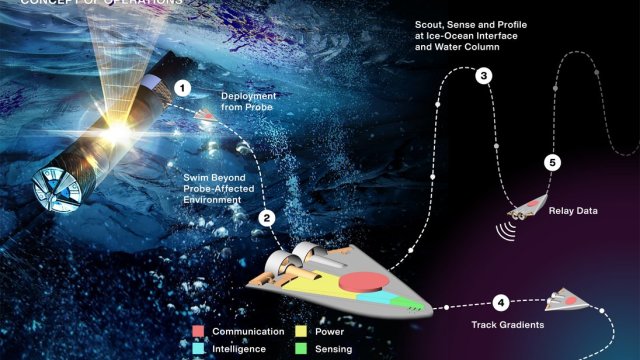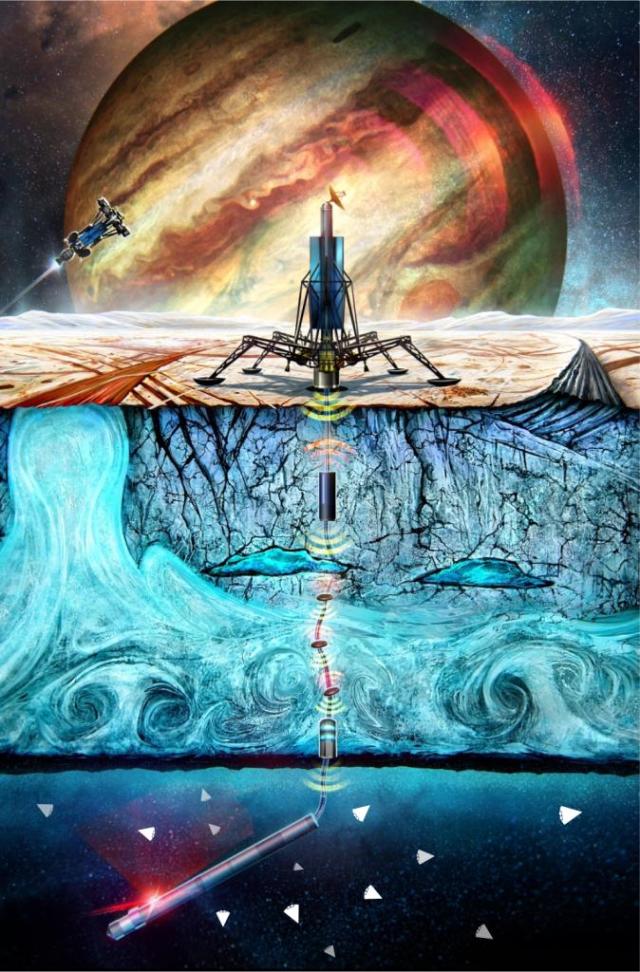NASA has allowed to continue work on the SWIM project, in which a swarm of small floating micro-robots can be sent to Europe. It is expected that when they reach the satellite's subsurface ocean with the help of an ice-melting cryobot, they will measure its properties and also look for biomarkers, it is reported on the NASA Jet Propulsion Laboratory website.
Jupiter's moon Europa is one of the most interesting bodies in the Solar System for astrobiologists, under its icy crust there is a multi-kilometer water ocean that does not freeze due to the heating of the satellite's interior under the action of tidal forces from Jupiter. The ocean generates geysers that emit water vapor from cracks in the crust, and hydrothermal processes can occur at its bottom, which provides conditions for the emergence of microbiological forms of life. Currently, the interplanetary stations Europa Clipper and JUICE (Jupiter Icy Moon Explorer) are being developed, the purpose of which will be Europa, as well as the Europa Lander descent module.
The SWIM (Sensing With Independent Micro-Swimmers) project was selected in 2021 as part of the NIAC (NASA Innovative Advanced Concepts) program to support innovative ideas in the field of astronomy and astronautics that can be implemented over the coming decades. SWIM involves exploring the ocean of Europe using a swarm of 3D-printed floating wedge-shaped microrobots with a length of about 12 centimeters and a volume of 60 to 75 cubic centimeters, which are able to communicate using ultrasound. About four dozen robots can be loaded into a cryobot, 10 centimeters long and 25 centimeters in diameter (it is being developed as part of the SESAME project), which will make its way through the crust of Europe, melting ice. When the robots get into the ocean, they will analyze its properties, such as temperature, salinity, acidity level and pressure, and look for biomarkers.

Image source: Ethan Schaler / NASA JPL
At the end of June 2022, NASA announced that the SWIM project had successfully completed the first phase of work and won the right to proceed to the second stage, which is designed for two years, while the project team received 600 thousand dollars. Now she has to carry out the design, prototyping and testing of a prototype robot, a robot communication system with each other, and also build a model for controlling a swarm of robots.
Earlier we talked about how NASA approved the continuation of work on the lunar radio telescope, also selected as part of the NIAC program.
Alexander Voityuk

